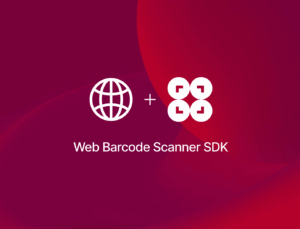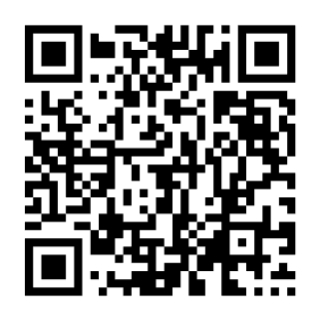Today’s business operations are unthinkable without automated data processing solutions. Warehouse management systems (WMS), electronic health records (EHR), or enterprise resource planning (ERP) all facilitate daily workflows.
However, businesses are rarely leveraging the full potential of these digital systems. One aspect in particular offers major room for optimization: input.
Too often, employees are still manually transferring data into these digital systems, resulting in error-prone and slow workflows. Or they are stuck utilizing outdated technology, such as traditional barcode scanners. Such legacy devices may seem like they are automating data extraction – but actually don’t. Not truly.
These inefficiencies impact operational speed, decision-making, and overall business agility.
The solution is automated barcode data extraction. Let’s now learn more about how this technology efficiently delivers the structured, actionable data that automated workflows depend on.
Barcode scanning vs. barcode data extraction: What’s the difference?
Traditional barcode scanners simply capture a barcode pattern, transforming the raw sequence of dark and light patches into a plain string of characters.
Although this technology has revolutionized numerous industries, increasingly data-dense barcodes render it often inadequate to the demands of modern business environments. After all, a QR code can easily hold dozens of individual data items.
Barcode data extraction is the next step. After the initial barcode scanning, this technology decodes and parses the captured data into meaningful information, so-called key-value pairs. This machine-readable, structured data is the perfect input for databases, applications, and automated workflows – in contrast to the raw data string traditional scanners return.
Key-value pair data is vital for workflow automation, especially for high-volume data processing. Individual barcode data items, such as product IDs, dates, or account numbers, can be parsed and used to populate forms, records, and applications.
As businesses face steadily increasing volumes of data, this instant transformation of raw data into actionable information is crucial for operational efficiency.
Applications for barcode data extraction
Barcode data extraction can be integrated into a variety of data input workflows, thanks to enhanced barcode scanner software and mobile devices.
It is often implemented in an app connected to enterprise resource planning (ERP), warehouse management (WMS), or electronic health record (EHR) systems. In this way, any modern smart device can be turned into an advanced barcode scanner.
The benefits are already tangible across various industries.
| Industry | Application |
| Supply chain logistics | Tracking and traceability for compliance, enhancing product security, and improving recall management; via scanning barcodes on pallets, lots, batches, and containers. |
| Warehouse management | Automating inventory updates and order processing via modern warehouse receiving and picking methods such as pick-by-scan and pick-to-light. |
| Inventory management | Automating inventory tracking and stock counts, enabling real-time stock visibility. |
| Retail | Barcodes on packaging enable quality control and traceability for the cold chain, shelf space optimization, and price tag scanners, enhancing operations on the floor compliance with regulations such as the EU Product Passport and with GS1 Sunrise 2027. |
| General business operations | Keeping track of materials and assets through enhanced inventory management and asset tracking. |
| Healthcare | Enhancing patient safety and ensuring compliance with regulations, such as the UDI system, with barcode scanning of patient wristbands for positive patient identification, lab specimens for accurate identification, and matching medication for administration. |
Key considerations for choosing a barcode data extraction solution
Choosing a particular barcode data extraction solution involves many industry- and application-specific considerations.
However, the following general questions are a good starting point:
- Which barcode types are supported?
- Should you choose an SDK or an API?
- Can the solution handle real-world challenges?
- Does it offer features to increase workflow speed and accuracy?
Supported barcode types
A well-rounded solution should scan all common 1D and 2D barcode types. It should also parse the complex data embedded in specialized barcode standards, such as HIBC or UDI.
SDKs vs. APIs
Most commercial barcode data extraction software solutions come as SDKs or APIs, requiring different levels of expertise and knowledge for integration.
An Application Programming Interface (API) is a set of protocols that allows different software components to communicate, allowing applications to access services. In the context of barcode readers, this typically means that the software communicates with a cloud server that does the actual data extraction.
A Software Development Kit (SDK) is a toolkit containing everything needed for building an app, including one or more APIs. Often, they also come with UI components. Barcode processing is likely to be local.
Bare APIs and full SDKs have characteristic differences in terms of deployment flexibility, scalability, barcode processing, and developer control.
| API | SDK | |
| Deployment flexibility | High – applications can access remote services from any environment that can make a web request | Local – enables offline use, but requires more compatibility considerations |
| Scalability | Provider-managed, scales with demand | User-managed, scales with the user’s infrastructure |
| Barcode processing | External processing, reliance on vendor data security | Local processing (client or on-premises servers, end-user devices), full control over data flow and privacy |
| Developer control | Limited to API parameters | Deep, full control and customization |
SDKs are best for maximum control, data security, and offline environments, or when deep customization is needed. APIs are suited for rapid, flexible, and scalable integrations.
Real-world challenges
The solution must be able to handle real-world challenges, such as damaged or low-quality barcodes in less-than-ideal lighting.
When choosing a solution, pay attention to its image processing capabilities. With modern neural network and machine learning technology, even badly compromised barcodes can still be scanned quickly and accurately.
In broad strokes, advanced barcode data extraction software works like this:
- After taking an image of the barcode, the software converts it to grayscale and reduces noise with special filters.
- Binarization converts it to black-and-white pixels, so that the software can detect and identify the barcode on the image.
- Machine-learning algorithms analyze the barcode pattern and convert it into readable data.
Developing such a robust barcode recognition system is not a trivial task. In addition to technical experience, it takes extensive research and development in computer vision and document intelligence.
Speed and accuracy
Advanced barcode data extraction solutions should also offer workflow optimization features. Multi- and batch-scanning features, for instance, can dramatically speed up the processing of large volumes of data.
Overall high accuracy minimizes the need for manual intervention. This can be further improved with good user guidance features, from on-screen instructions to AR highlights and flashlight controls.
Empower your business with intelligent barcode data extraction
Implementing an advanced barcode data extraction solution lets businesses trade time-consuming manual work for accuracy, speed, and operational efficiency.
At Scanbot SDK, years of experience and cooperation with our customers drives the evolution of our solutions. The result is a Barcode Scanner SDK perfectly suited for enterprise workflows.
With functions such as Multi Scanning or Batch Scanning, it speeds up high-volume workflows. On the developer side, our customizable Ready-to-Use UI Components let you build a user-friendly interface in minutes – including user guidance features.
The Scanbot SDK handles damaged, low-light, or tiny barcodes with ease, and reliably scans all common 1D and 2D barcodes symbologies. It comes with a number of built-in parsers for GS1, HIBC, and other data-dense barcode systems.
You can see for yourself how it works by trying our free barcode scanner demo app.
To learn more about the data parsers we offer, contact us at sdk@scanbot.io.







